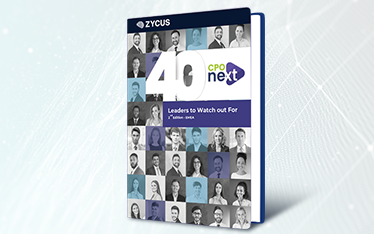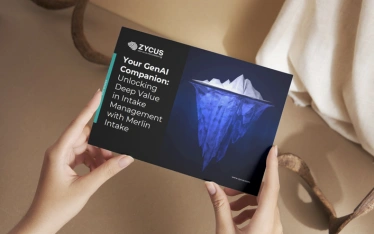Discover the essential steps and best practices for implementing an effective source to pay process. Learn how to streamline procurement, optimize supplier relationships, and achieve cost savings with this comprehensive guide to source-to-pay.
What is Source to Pay?
S2P, or source to pay, refers to the entire end-to-end procurement process. It starts with the identification of suppliers and ends with the payment of goods and services. There are several crucial steps/actions involved between the two processes including purchasing, procurement management, accounts payable, strategic sourcing, vendor management and contract management.
Read more: 2025 Source-to-Pay Trends Shaping Procurement
Source to Pay Lifecycle
The following steps are a part of the S2P process:
1. Defining requirements and establishing vendor expectations
Set expectations for vendor performance and precisely explain the required criteria. Clearly define the project’s objectives, technical requirements, delivery targets, and quality standards.
Read more: Demystifying the Source to Pay Process
2. Identifying potential suppliers suitable for the requirement
Identify and assess prospective suppliers that suit the specified needs efficiently. Consider factors like industry reputation, capacity, past performance, and capability to meet technical and delivery prerequisites.
3. Examining a list of potential suppliers
Analyze the compiled list of potential providers in detail. Examine the qualifications, experience, financial standing, and track record of each supplier. In addition to evaluating their responsiveness, adaptability, and possibility for ongoing collaboration, assess how well they correspond with your sourcing criteria.
4. A selection procedure to choose the ideal vendor
Utilize a systematic selection process to choose the best provider. Utilize pre-established standards including affordability, assurance of quality, technical competence, and delivery capabilities. To compare vendors fairly, conduct in-depth evaluations that may include RFPs or RFIs.
5. Negotiating and approving contracts
Engage in strategic talks with the selected vendor to create terms and conditions that are acceptable to both parties. Pay attention to the costs, delivery timelines, performance indicators, and conflict resolution procedures. To verify contract correctness and compliance, work together with the legal and procurement teams. After it has been completed, get the necessary approvals from the appropriate parties.
6. Creating purchase orders
Create thorough purchase orders (POs) to formally establish the procurement procedure. Include crucial information such as product descriptions, quantities, agreed-upon prices, delivery schedules, and vendor details. This phase is streamlined through integration with your procurement system, which improves efficiency and lowers the chance of human error. For controlling inventories, tracking purchases, and ensuring smooth S2P cycle activities, clear and accurate POs are crucial documentation.
7. Processing purchase orders and requisitions
To ensure timely procurement, effectively manage the processing of purchase orders (POs) and requisitions. Verify the specifics of the request, compare them to existing contracts, and turn approved requests into POs. Utilize automation to speed up operations while preserving accuracy. Work together with the appropriate departments to resolve any ambiguities or clarifications.
8. Goods and Services receipt
Verify the accuracy of the documentation of the receipt of the products and services. Examine the items for quality, quantity, and compliance with requirements after delivery. For effective tracking and reconciliation, use digital technologies. In the Source to Pay system, rapid issue resolution is made possible by timely issue recording of received products and services, ensuring accurate financial records, assisting inventory management, and promoting smooth procurement processes.
9. Delivery approval & invoice payment
Start the delivery approval process after verifying the receipt of the goods or services. Verify compliance by comparing products received with purchase orders. Once accepted, move on to invoice verification to ensure correctness and compliance with agreed-upon terms. Initiate prompt payment processing after verification, adhering to predetermined payment cycles. This methodical technique simplifies financial transactions, confirms the results of procurement, and upholds supplier relationships, all of which are crucial to the Source to Pay process.
Difference Between Source to Pay & Procure to Pay
Source-to-Pay (S2P) and Procure-to-Pay (P2P) are two distinct but interconnected processes that form the backbone of effective procurement and financial operations within an organization. While both include the purchase of products and services, they do so in different ways and with diverse goals, demonstrating a comprehensive approach to effective resource management.
S2P adopts a pro-active approach, starting the purchasing process by determining the organization’s need for goods or services. Internal stakeholders must create vendor expectations and work together to define the needs in this situation. The supplier evaluation phase of S2P follows, during which documentation for requests for information (RFI), requests for quotes (RFQ), or requests for proposals (RFP) are created. Potential vendors are asked for bids, and then the qualifying process is started to make sure the vendors meet the organizational requirements. This is followed by contract drafting and negotiation, which paves the way for a clear consensus prior to the procurement itself.
Read our blog on: Source-to-pay vs Procure-to-pay: A Comprehensive Guide
However, P2P picks up where S2P concludes. P2P begins with the development of purchase orders (POs) based on purchase requisitions after the procurement requirements have been created and vendors have been chosen. This phase is overseen by the procurement team, which transforms internal requests into actual orders that reflect specifications, amounts, and agreed-upon terms. The subsequent phases are then built on top of these POs.
In the P2P process, accounts payable comes into play, managing vendor invoicing and payment disbursement. Before processing payment, the invoices are compared to the related purchase orders and checked for accuracy. By meticulously validating each item, it is made sure that only those that have been approved and accurately billed will be paid for, minimizing errors and improving financial procedures.
S2P essentially lays the foundation for effective procurement, including vendor selection, contract negotiation, and contract drafting. The procurement cycle is subsequently completed by P2P, which focuses on the actual execution of purchase orders, invoice processing, and payment. Insuring a thorough approach to sourcing, procurement, and financial management through this separate separation of the two processes encourages transparency, correctness, and efficient resource use inside a business.
Also Read: On a journey to digitize your Source-to-Pay cycle? How ready are you?
Automation Opportunities in the Source-to-Pay Process
By leveraging automation, businesses can streamline operations, reduce costs, and enhance transparency from sourcing to payment.
- Cost Reduction: Automation reduces the need for manual intervention, which can be both time-consuming and prone to errors. Automated systems can perform tasks such as three-way matching, invoice processing, and payments more quickly and accurately, leading to substantial cost savings.
- Enhanced Accuracy: Manual data entry is one of the biggest sources of errors in procurement processes. Automation ensures that data flows seamlessly from one stage to the next, reducing the likelihood of errors and ensuring compliance with company policies and external regulations.
- Improved Supplier Relationships: Faster and more accurate processing of orders and payments improves supplier satisfaction. Automation also allows for better communication with suppliers through integrated platforms, providing real-time updates on order status, discrepancies, and payments.
- Data Analytics and Insights: Automated tools collect and analyze data continuously, providing valuable insights into spending patterns, supplier performance, and potential bottlenecks. This information is crucial for making informed decisions and strategic planning.
Read more: 5 Key Benefits of Source to Pay Automation
Best Practices in Source to Pay
The Source-to-Pay (S2P) process is crucial for organizations aiming to optimize their procurement and financial operations. Here are some best practices to ensure the S2P process is both efficient and effective:
- Standardize Processes: Standardization is the backbone of efficiency. By streamlining sourcing, procurement, and payment processes, companies can reduce complexity and improve compliance. Standardizing documents, procedures, and approval hierarchies across departments ensures that everyone is on the same page, which minimizes errors and speeds up processing.
- Leverage Technology: Utilizing advanced technologies such as Enterprise Resource Planning (ERP) systems and automated procurement tools can significantly enhance the accuracy and speed of the S2P process. These technologies facilitate better data management, reduce manual errors, and allow for real-time analytics and reporting.
- Strengthen Supplier Relationships: Developing strong relationships with suppliers can lead to better pricing, higher quality goods and services, and more reliable supply chains. Regular interactions, transparent communications, and fair dealings will build trust and encourage suppliers to prioritize your needs.
- Implement Comprehensive Training: Ensuring that all personnel involved in the S2P process are well-trained is essential. Comprehensive training programs should cover the latest tools, technologies, and compliance requirements, helping to avoid common pitfalls and misunderstandings that can lead to delays or financial losses.
- Continuous Improvement: The S2P process should be subject to ongoing evaluation and improvement. Regular audits and reviews can help identify inefficiencies or outdated practices that need refinement. Engaging with stakeholders to gather feedback and incorporating industry trends and innovations can also drive continuous improvement.
By adhering to these best practices, organizations can maximize the efficiency and effectiveness of their Source-to-Pay processes, leading to improved operational performance and enhanced financial health.
Benefits of a Source to Pay Platform
1. Gain more sourcing savings through improved procurement visibility
You can increase sourcing savings through enhanced visibility into the procurement processes. The improvement of supplier relationships, identification of cost-saving opportunities, and better decision-making are all made possible via enhanced transparency. As a result of this, your company is better able to make strategic decisions that maximize savings and boost overall procurement efficiency.
2. Integrate crucial procedures onto a single platform to accelerate the signing of contracts
Your workflow can be made more efficient by combining key procedures into a single platform. This integration accelerates the journey from initial stages to signed contracts. You can cut down on delays and assure a quicker, more efficient contract completion by doing away with manual handoffs and fostering teamwork. This helps your organization accomplish its goals more quickly while maintaining a smooth and well-organized source-to-pay (S2P) process. It also improves accuracy and compliance.
3. Strengthen procedural, regulatory, and contractual compliance
Improve compliance with policies, laws, and contracts by using an integrated S2P strategy. You can ensure adherence to internal procedures and outside requirements by centralizing data and automating processes. Errors, inconsistencies, and breaches are reduced to a minimum as a result. Transparency and accountability are increased as auditing and reporting become more effective. This thorough compliance reinforcement not only protects your operations but also builds stakeholder trust and strengthens your reputation, laying the groundwork for long-term success.
4. Boost trading partner collaboration, confidence, and spend
Increase trading partner spending dynamics, collaboration, and trust through efficient Source-to-Pay implementation. Relationships improve through promoting open communication and data sharing on a single platform. Mutual understanding of the processes fosters confidence and promotes more strategic cooperation. Increased supplier loyalty, streamlined spending habits, and creative solutions are the results of this synergy. In the end, the S2P framework fosters a thriving ecosystem for all stakeholders, laying the groundwork for long-term success.
5. Negotiate better pricing and have more accurate forecasting
Centralized procurement data and analytics enable data-driven and strategic negotiating. This gives you the ability to take advantage of supplier relationships, bargain for volume reductions, and find untapped cost-saving possibilities. Having simultaneous access to accurate historical and real-time data enables your firm to estimate demand more accurately and make decisions that optimize inventory levels and lower costs throughout the supply chain.
6. Save money at the start of the procurement process
S2P works with all providers, however the P2P idea only works with current sellers. By widening the market, you lay the foundation for fair and competitive pricing. You will immediately save money by doing this. Your costs will be considerably reduced if you incorporate automation into the mix!
Optimize your procurement process today with our Zycus’ advanced Source to Pay Software and take control of your supply chain management!
Harnessing Generative AI for Source to Pay Transformation
Generative AI is revolutionizing the source-to-pay (S2P) landscape, enabling organizations to drive efficiency, accuracy, and strategic decision-making across procurement operations. This transformative technology leverages advanced machine learning models to enhance sourcing, procurement, and supplier management processes.
Download Whitepaper: Democratizing Source-to-Pay with Generative AI: The Next Big Leap in Procurement
How Generative AI Enhances Source to Pay
- Streamlined Vendor Selection: AI-driven models analyze vast supplier data, offering predictive insights to identify and shortlist vendors based on quality, delivery reliability, and cost efficiency.
- Contract Management: Generative AI simplifies contract lifecycle management by generating tailored contracts, flagging compliance risks, and suggesting improvements based on historical data and market trends.
- Dynamic Spend Analytics: AI-powered tools provide actionable insights into spending patterns, enabling better budget allocation and cost control strategies.
- Automated Invoice Processing: By extracting and validating data from invoices, generative AI minimizes manual effort and errors, expediting the accounts payable process.
- Demand Forecasting and Optimization: Predictive analytics models optimize inventory levels and procurement cycles by accurately forecasting demand, reducing waste and procurement delays.
Download 10X Source to Pay with GenAI
Real-World Success Story: Delta Air Lines
Delta Air Lines significantly enhanced its supply chain efficiency by adopting Zycus’ Source-to-Pay Platform.
FAQs
1. What is Source to Pay (S2P)?
S2P is the entire process a company goes through, from identifying a need for goods or services (sourcing) to final payment (pay).
2. What are the benefits of implementing an S2P process?
Benefits include increased efficiency, reduced costs, improved visibility, better control, and stronger supplier relationships.
3. What are the main stages of S2P?
Common stages include:
- Sourcing: Identifying and evaluating potential suppliers.
- Requisitioning: Creating a formal request for goods or services.
- Procurement: Negotiation, ordering, and receiving goods or services.
- Invoice Processing: Receiving and approving invoices.
- Payment: Making timely payments to suppliers.
4. What are the benefits of using an S2P platform?
Benefits include:
- Increased efficiency
- Reduced costs through better spend management
- Improved visibility and control over procurement processes
- Enhanced supplier collaboration and relationships
- Faster cycle times for approvals and payments
- Improved data quality and reporting
5. What are the benefits of AI in S2P?
Benefits include:
- Faster and more accurate sourcing decisions
- Improved risk management and supplier performance monitoring
- Automated data analysis for better spend optimization
- Reduced manual workload for procurement teams
- Predictive analytics for proactive decision-making
Related Reads:
- Blog – 5 Key Benefits of Source-to-Pay Automation
- Blog – A CPO’s Ultimate Guide to Selecting the Right Source-to-Pay System
- Zycus Source to Pay Solution Software
- White Paper – 8 Reasons to go for Integrated Source-to-Pay Suite
- Download Whitepaper – Essential Source-to-Pay KPIs, Implementation Mindfulness & Benchmarking
- Download Research Report – Robotic Process Automation in Procurement What leaders need to know about?











